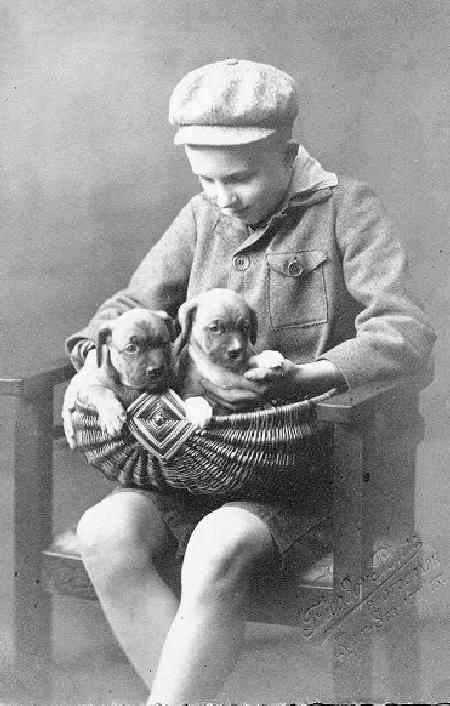
Figure 1.--This German boy was photographed with his puppies in 1925. Note the cap, it looks like a cross beyween a peaked cap with a rounded crown and a flat cap.


Figure 1.--This German boy was photographed with his puppies in 1925. Note the cap, it looks like a cross beyween a peaked cap with a rounded crown and a flat cap. |
Sailor caps were still common in the 1920s, bit not as common as before the War. various styles of flat caps were worn. We also note another military-syle cap that looks like a peaked army cap. Both styles disappeared very rapidly in the 1930s after the NAZIs seized power. Shirts were worn with wide open collars, a style very popular in the 1920s and 30s. Boys attire changed from kneepants to short pants in the 1920s. Boys especially in the 1920s commonly wore long over-the-knee stockings, both for warmth and formal occassions. Kneesocks were, however, becoming more common. The shorts tended to be realatevly long in the 1920s and even into the early 30s when the Weimar Republic was seized by the NAZIs. At the same time kneesocks conntinued to be very common. Many boys wore sandals. In some case single bar strap shoes, but English style "T"-strap sandals were also common. Long stockings were still common, especially in the winter. More and more boys, however, began to wear socks. Kneesocks were most.
Navigate the Boys' Historical Clothing German pages:
[Return to the Main German Weimar Republic chronology page]
[German choirs]
[Hitler Youth]
[German school uniforms]
[German royalty]
[German sailor suits]
[Lederhosen]
[Ethnic]
[Tights]
[Long stockings]
Navigate the Boys' Historical Clothing Web Site:
[Introduction]
[Activities]
[Biographies]
[Chronology]
[Clothing styles]
[Countries]
[Bibliographies]
[Contributions]
[FAQs]
[German glossary]
[Satellite sites]
[Tools]
[Boys' Clothing Home]
